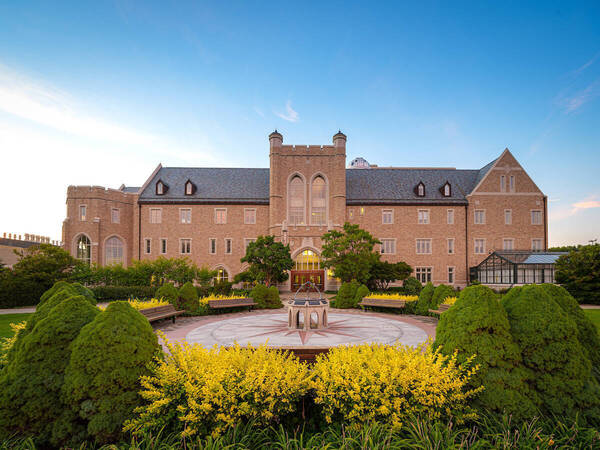Jordan Hall of Science

Notre Dame Houses the Future of Science Education
With the most advanced science instrumentation of any university in the nation, we define how young researchers will work in the 21st century.
How Students Benefit:
From the atoms to the cosmos, students experience a world of science in the Jordan Hall of Science. Students use the same kind of equipment and labs as they would in a research job. They connect with and learn from Nobel Prize winners and world experts in their fields through special guest lecturers.
The biggest scientific discoveries that lie ahead in the 21st century are apt to be found on the sub–molecular scale
The Jordan Hall’s revolutionary NMR technology allows chemistry, biology and physics students to study molecules at the atomic level.
Astronomy and Studying our Origins
- See images of the nighttime sky as seen at any time—past, present, or future—and from anywhere on Earth!
- Instructors and students can produce their own spectacular star shows as part of the lesson for the day
- Large research-quality telescope that rivals any other in the Midwest
- Real-time, streamed, expansive screen images from the Hubble Space Telescope
Interdisciplinary Study
The Digital Visualization Theater offers opportunities to any discipline that might want to use it to illustrate anything from the inside of a cell to perhaps a city that exists only in the mind's eye of an instructor in the School of Architecture.
Fast Facts about Jordan Hall
- Two 250-seat lecture halls
- 136-seat Digital Visualization Theater with a 50-foot dome
- 223 fume hoods for each student in labs
- 4-bay greenhouse
- Largest building on campus devoted to undergraduate education